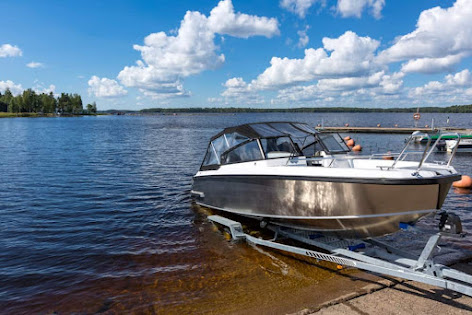Which Type of Marine Toilet is Right for You?
Choosing the right septic management system for your boat depends on several factors, including whether the law requires you to have a specific type of marine septic device. When considering your options, learn about the laws and regulations and ask yourself the following:
- How frequently do you use your boat?
- How long do the trips you take?
- What kind of waterways do you boat on?
- How many people usually are on board and how old are they?
- Do you or anyone you're taking on board have health conditions that need to be taken into consideration?
- Do you have the time, funds, and knowledge necessary to properly install, operate, and maintain the system you are considering?
This guide will help you explore different sanitation
management options. Read on to learn more about each system.
Portable Toilets
These are simple, convenient, and less expensive septic management options that require little space. Due to their simple design, they require minimal maintenance and are unlikely to need repairs, saving time and money.
However, it has limited waste disposal capacity, so it is not ideal for
long trips with multiple people. Plus, emptying a portable toilet has a gross
factor because it's not a closed system. Portable toilets for boats should be emptied and
flushed at a designated emptying station. Alternatively, they can be emptied
via a suction wand at the pumping facility, or into any land-side toilet.
Positives:
- •Simple design
- It requires little maintenance, which saves you time and money
- •easy to use
Negatives:
- Limited waste capacity
- Higher “gross” factor for the discharge
Marine Composting Toilets
Although the number of boaters choosing a marine composting
toilet is not common, their number is rising. These systems are MSD Type III
and are considered approved by the US Coast Guard if they meet the following
requirements:
•
It is used only for the storage of wastewater
and effluent water at ambient air pressure and temperature.
•
Be designed to prevent the discharge of treated
or untreated sewage or any waste derived from sewage (Type III) into the sea.
Most composting toilets have not been inspected by the U.S.
Coast Guard. Manufacturers attest that the device meets the above requirements.
Positives:
- Easily cleaned
- There is no unpleasant odor like traditional boat toilets
- Simple design
- It requires little maintenance, which saves you time and money
- Lighter than traditional boat toilets
Negatives:
- Higher than conventional boat toilets
- Ventilation fan may increase electricity consumption
- User practice required to keep liquids separate from solids
Bucket
Although not the most glamorous option, the bucket is good
for “emergency” needs especially when taking short trips with younger kids.
Just make sure you have a secure lid for it. You can empty the bucket at a
designated emptying station, at any land-side toilet, or via a suction wand at
a pumping facility. The human waste in the bucket is not treated and it is
illegal to discharge it into the sea within state waters.
Positives:
- Simpler design
- Lowest cost
Negatives:
- Higher “gross” factor for the discharge
- Not comfortable
- It may be difficult to use
I hope this information is useful to you as you consider what type of marine toilet is right for you. I also recommend talking to several other experienced boaters about their system, if you can find a boat with the same system you are thinking of installing, even better. Weigh the anchors!



Comments
Post a Comment